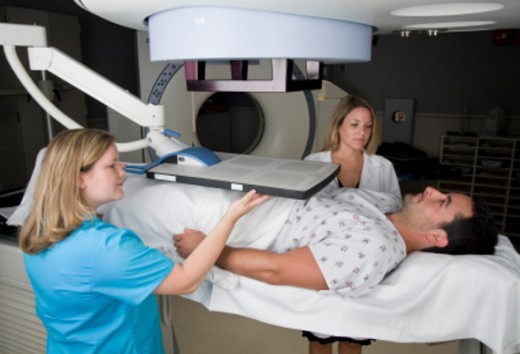Treatment of Mesothelioma
What is Mesothelioma?
It is a type of cancer caused by exposure to asbestos. In this disease, malignant cells develop in the mesothelium which is a protective lining that covers most of internal organs in our body. It occurs mostly in the outer lining of the lungs and internal chest wall which is called pleura. It may also occur in the areas such as the lining of the abdominal cavity called peritoneum and also in the heart and in the double-walled sac that surrounds the heart called pericardium and tunica vaginalis which is the serous covering of the testis.
- Use of Asbestos and the risk of Mesothelioma
Asbestos is a naturally occurring silicate mineral with long, thin fibrous crystals. The inhalation of asbestos fibers can cause serious illnesses including malignant lung cancer and Mesothelioma.In Mesothelioma, malignant cells develop in the mesoth
To read more details of Mesothelioma please click here ———→

The treatment for patients with malignant mesothelioma depends on the following factors:
- the stage of the disease
- the location of the cancer
- how far the cancer has spread
- how the cancer cells look under the microscope
- the patient’s age
- the patient’s preferences

There are three traditional treatment methods for patients with malignant mesothelioma:
- Surgery - taking out the cancer cells
- Chemotherapy - use drugs to fight the cancer
- Radiation - use high-dose X-rays or other high-energy rays to kill cancer cells or keep them from growing


A diagnostic surgery is performed in order to confirm and stage mesothelioma.
- Thoracoscopy - This enables the physician to evaluate the pleural cavity and to conduct multiple tissue biopsies under direct vision.
- VATS, or video-assisted thoracic surgery – The physician can view the pleural space with the assistance of a camera, and obtain sufficient tissue samples for analysis by a pathologist. This is an alternative to thoracoscopy,
- Laproscopy – This can be important in evaluating a patient for potential pleurectomy or extrapleural pneumonectomy. It is used in patients in cases where imaging techniques suggest possible invasion of the tumor through the diaphragm.
The following surgical treatments can be used for malignant mesothelioma patients:
- Wide local excision - Surgery to remove the cancer and some of the healthy tissue around it.
- Pleurectomy and decortication - Surgery to remove part of the covering of the lungs and lining of the chest and part of the outside surface of the lungs.
- Extrapleural pneumonectomy - Surgery to remove one whole lung and part of the lining of the chest, the diaphragm, and the lining of the sac around the heart.
- Pleurodesis - A surgical procedure that uses chemicals or drugs to make a scar in the space between the layers of the pleura. Fluid is first drained from the space using a catheter or chest tube and the chemical or drug is put into the space. The scarring stops the build-up of fluid in the pleural cavity.
Patients may be given chemotherapy or radiation therapy after surgery to kill any remaining cancer cells even if all the cancer cells that can be seen at the time of the surgery are removed.
Treatment is given after surgery to lower the risk that the cancer will come back and it is called adjuvant therapy.



Chemotherapy means the treatment of cancer using drugs. Anticancer, or chemotherapy drugs, work to destroy cancer cells by preventing them from multiplying. Most drugs used to treat mesothelioma are intravenous or given by injection into a vein. Sometimes chemotherapy drugs are directly put into the chest or abdomen and this is called intracavitary chemotherapy
Chemotherapy for mesothelioma is not considered curative. Therefore, depending on the stage of the cancer at the time of diagnosis and the age and health of the patient, chemotherapy is used for different purposes.
- To control the cancer by stopping its spread or slowing its growth.
- To shrink tumors prior to other treatments, such as surgery. This is called neoadjuvant chemotherapy.
- To destroy any remaining cancer cells which may remain after surgery.
- To relieve symptoms, such as pain. This is called palliative chemotherapy, and is given in cases when a drastic reduction in the tumor is not expected.
When chemotherapy is given by mouth or injected into a vein or muscle, the drugs enter the bloodstream and reach cancer cells throughout the body. When chemotherapy is placed directly into the spinal column, an organ, or a body cavity such as the abdomen, the drugs mainly affect cancer cells in those areas only. The use of more than one anticancer drug is called Combinationchemotherapy. The way the chemotherapy is given depends on the type and stage of the cancer being treated.
Biologic therapy is a treatment that uses the patient’s immune system to fight cancer. Substances made by the body or made in a laboratory are used to boost or restore the body’s natural defenses against cancer. This type of cancer treatment is also called biotherapy or immunotherapy.


Radiation therapy is a cancer treatment that uses high-energy x-rays or other types of radiation to kill cancer cells or keep them from growing. Radiation therapytreats cancer by using penetrating beams of high energy or streams of particles called radiation. In treating mesothelioma, radiation may be used aggressively in combination with surgery, or palliatively to control symptoms. There are two types of radiation therapy.
- External radiation therapy uses a machine outside the body to send radiation toward the cancer.
- Internal radiation therapy uses a radioactive substance sealed in needles, seeds, wires, or catheters that are placed directly into or near the cancer.
The way the radiation therapy is given depends on the type and stage of the cancer being treated.


Clinical trials mean the last testing steps a new cancer treatment must go through before it is released to the general public to use. They often use traditional cancer treatments - surgery, chemotherapy and radiation - but in different ways to try to find more effective remedies. Other clinical trials for mesothelioma include new drugs or experimental therapies such as photodynamic therapy, gene therapy or other experimental approaches.
Many leading cancer treatment centers and drug companies are conducting clinical trials in the hope of helping mesothelioma patients live longer. Any patient may participate in clinical trials. Clinical trials require the patient to meet certain eligibility requirements. He or she might need to be at a certain stage of the disease in order to participate. There are benefits and disadvantages in being involved in a clinical trial, but many people feel that the benefit of being able to try a new drug that is promising enough to merit a clinical trial outweighs the negatives.
Immunotherapy
One of the more traditional treatments for cancer has been the use of chemicals produced by the body's immune system against the cancerous cells. While they are often effective in treating other kinds of cancer, they have had only limited success in treating mesothelioma. Recently, however, researchers have found that introducing interleukin-2 directly into the space between the lungs and the ribs may slow the growth of tumors. There are a number of clinical trials ongoing.
Heat Therapy
Clinical trials have shown that mesothelioma cells are more susceptible to anticancer drugs that are heated to temperatures as high as 109 degrees. There are two ways that this is accomplished. The first is to heat the drugs themselves before injecting them. The other is to heat the pleural cavity before the drugs are injected.
Gene Therapy
There are a number of different kinds of gene therapy being investigated. One of the most promising involves genetically changing the structure of a virus so that the cells that are invaded by the virus become more susceptible to drugs used to treat cancer.
Photodynamic Therapy
Photodynamic therapy is being studied for use against several kinds of cancer, including malignant mesothelioma. It involves the injection of photo-sensitive substance into the pleural cavity. The molecules of this substance are absorbed by the cancerous cells, making them susceptible to light. They are then subjected to a low intensity laser or high-intensity light which kills off the mesothelioma cells.


Many people who are treated for serious illnesses find comfort in different alternative therapies such as Ayurvedic treatment, Homeopathy, Acupuncture etc. These methods of disease management can complement conventional therapies and allow the patient to be more at peace and comfortable during this difficult time. Meditation and Yoga are common methods used by many to reach a state of relaxation, and release endorphins, our body's natural pain relievers.
Other related Hubs
- Objectives
of Public and Private organizations A comparison
Both public sector and private sector organizations have objectives and missions. But depending on the type of organization, there are differences between the public and private sectors of a country. - Regulatory
Authorities Objectives and main activities
Regulatory bodies are established in countries according to the policy of the government with different types of authorities. Regulatory rules are designed to meet government objectives. - Concerns
of the business manager in protecting environment
Protecting the environment is considered nowadays as a key issue affecting everyone. Business organizations are pressurized to ensure that the environment suffers minimum damage due to their processes, products and services. - Effects
of high inflation
Inflation means rising prices and it shows the increase in cost of living. In economics, inflation is explained as rise in the general level of prices of goods and services in an economy over a period of time. - Interest
Rate A major economic force affecting financial plans
Rate of interest is the price of money which is lent or borrowed. It is always expressed as a percentage of the sum lent or borrowed. It is generally calculated on an annual basis. - A
profit for not-for-profit organizations
Not-for-profit entities do not expect profits. They are established not for profits but to achieve different objectives of the society. But, can these organizations operate without identifying and satisfying the needs? - What
is a Search Engine and how does it work
A Search Engine is a web site designed to search for information on the World Wide Web. What happens when someone enters a query into a search engine? The Search Engine then examines its index and displays a list of best-matching web pages.








